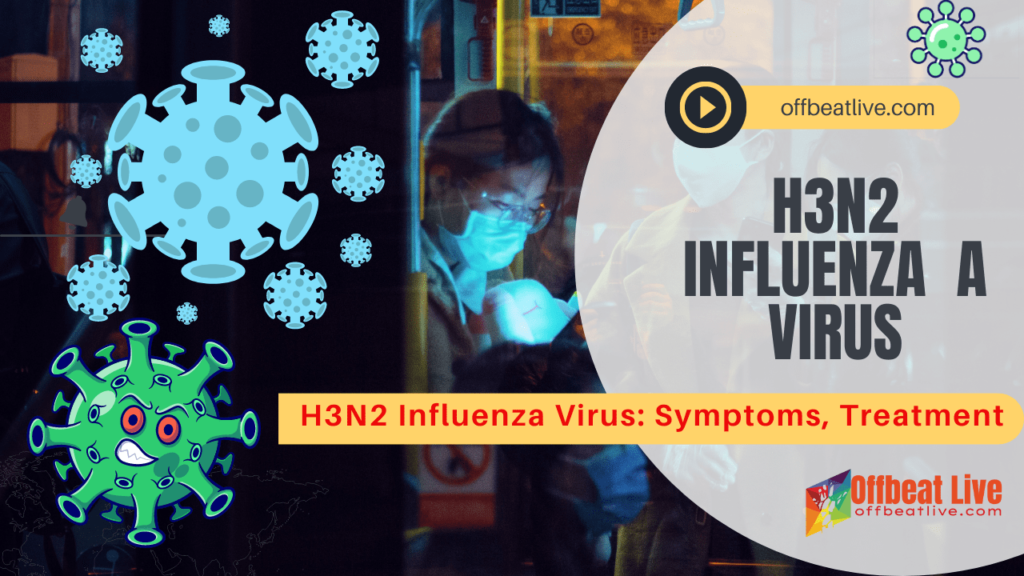H3N2 influenza virus is a subtype of the influenza A virus that can cause respiratory illness in humans. The virus is named after the two major surface proteins found on its outer envelope: hemagglutinin (H) and neuraminidase (N). The H3N2 subtype has been responsible for many outbreaks of seasonal flu over the years.
The symptoms of H3N2 influenza virus infection are similar to other types of flu, including fever, cough, sore throat, body aches, and fatigue. In some cases, people may also experience nausea, vomiting, and diarrhea. The virus can be transmitted from person to person through respiratory droplets when an infected person coughs or sneezes.
The best way to prevent H3N2 influenza virus infection is to get vaccinated against the flu each year. Other preventative measures include washing your hands frequently, avoiding close contact with sick people, and covering your mouth and nose when coughing or sneezing.
If you suspect that you have H3N2 influenza virus, it is important to seek medical attention promptly. Your doctor can prescribe antiviral medications that can help shorten the duration of your illness and reduce the severity of your symptoms.
H3N2 Influenza A Virus Symptoms
H3N2 influenza A virus can cause symptoms similar to other types of influenza viruses. These symptoms usually start 1-4 days after exposure to the virus and can last for several days to a week or more. Common symptoms of H3N2 influenza A virus include:
- Fever (usually high)
- Cough
- Sore throat
- Runny or stuffy nose
- Body aches
- Headache
- Chills
- Fatigue
In some cases, people with H3N2 influenza A virus infection may also experience gastrointestinal symptoms such as nausea, vomiting, and diarrhea, although these symptoms are more common in children than in adults.
It is important to note that some people infected with H3N2 influenza A virus may not have any symptoms at all but can still spread the virus to others. In severe cases, H3N2 influenza A virus infection can lead to complications such as pneumonia, bronchitis, and worsening of underlying medical conditions. If you experience any of the above symptoms or have concerns about H3N2 influenza A virus infection, it is best to contact your healthcare provider for guidance.
H3N2 Influenza Virus: How does the virus spread?
The H3N2 influenza virus spreads from person to person through respiratory droplets produced when an infected person talks, coughs, or sneezes. These droplets can land in the mouth or nose of people who are nearby or can be inhaled into the lungs. The virus can also spread by touching a surface contaminated with the virus and then touching one’s mouth, nose, or eyes.
The H3N2 influenza virus is highly contagious, and people with the virus can spread it to others even before they start showing symptoms. People can also spread the virus for up to seven days after becoming sick. This means that people who have been infected with the virus can spread it to others without even realizing it.
To reduce the spread of the virus, it is important to practice good respiratory hygiene by covering your mouth and nose with a tissue or your elbow when you cough or sneeze. You should also wash your hands frequently with soap and water or use an alcohol-based hand sanitizer. It is also recommended to avoid close contact with people who are sick and to stay home if you are sick to avoid spreading the virus to others.
H3N2 Influenza Virus: What are the precautions to be taken?
To prevent the spread of H3N2 influenza virus and protect yourself and others, it is recommended to take the following precautions:
- Get vaccinated: The best way to prevent H3N2 influenza virus is to get vaccinated each year. The flu vaccine is safe and effective and can help protect you and those around you from getting sick.
- Practice good respiratory hygiene: Cover your mouth and nose with a tissue or your elbow when you cough or sneeze. This can help prevent the spread of droplets that may contain the virus.
- Wash your hands frequently: Wash your hands with soap and water for at least 20 seconds, especially after coughing, sneezing, or blowing your nose. If soap and water are not available, use an alcohol-based hand sanitizer.
- Avoid close contact with sick people: Stay away from people who are sick to avoid getting infected with the virus.
- Stay home if you are sick: If you have symptoms of the flu, such as fever, cough, and body aches, it is recommended to stay home to avoid spreading the virus to others.
- Clean and disinfect surfaces: Use disinfectant sprays or wipes to clean frequently touched surfaces such as doorknobs, light switches, and countertops.
- Wear a mask: Consider wearing a mask when you are in public spaces, especially if you are unable to maintain a physical distance of at least 6 feet from others.
Taking these precautions can help reduce the spread of H3N2 influenza virus and protect yourself and those around you from getting sick.
H3N2 Influenza Virus: Dos and Don’ts:
Here are some dos and don’ts to keep in mind when it comes to preventing the spread of H3N2 influenza virus:
Dos:
- Do get vaccinated every year to protect yourself and others from the flu.
- Do cover your mouth and nose with a tissue or your elbow when coughing or sneezing to prevent the spread of droplets.
- Do wash your hands frequently with soap and water or use an alcohol-based hand sanitizer.
- Do stay home if you are sick to avoid spreading the virus to others.
- Do clean and disinfect frequently touched surfaces.
- Do wear a mask when in public spaces if you are unable to maintain physical distancing of at least 6 feet from others.
Don’ts:
- Don’t touch your eyes, nose, or mouth with unwashed hands to avoid introducing the virus into your body.
- Don’t go to work or school if you are sick to avoid spreading the virus to others.
- Don’t share personal items such as drinking glasses, utensils, or towels.
- Don’t cough or sneeze into your hands, as this can spread germs to other people or surfaces.
- Don’t underestimate the seriousness of the flu or the importance of taking precautions to prevent its spread.
By following these dos and don’ts, you can help prevent the spread of H3N2 influenza virus and protect yourself and those around you from getting sick.
H3N2 Influenza Virus FAQs
Here are some frequently asked questions and their answers:
Q: What is H3N2 influenza? A: H3N2 influenza is a subtype of the influenza A virus that causes seasonal flu in humans. It is one of several subtypes of influenza A viruses that circulate in the human population, along with H1N1 and influenza B viruses.
Q: What are the symptoms of H3N2 influenza? A: The symptoms of H3N2 influenza are similar to those of other types of flu, and can include fever, cough, sore throat, body aches, headache, chills, and fatigue. Some people may also experience vomiting and diarrhea, although these symptoms are more common in children than adults.
Q: How is H3N2 influenza transmitted? A: H3N2 influenza is primarily spread through droplets that are produced when an infected person coughs or sneezes. It can also be spread by touching a surface contaminated with the virus and then touching one’s mouth, nose, or eyes.
Q: How is H3N2 influenza treated? A: Treatment for H3N2 influenza typically involves getting plenty of rest, staying hydrated, and taking over-the-counter pain relievers to reduce fever and relieve other symptoms. Antiviral medications may also be prescribed in some cases, particularly for people who are at higher risk of complications from the flu.
Q: How can I prevent H3N2 influenza? A: The best way to prevent H3N2 influenza is to get vaccinated against the flu each year. Other preventive measures include washing your hands frequently, avoiding close contact with sick people, covering your mouth and nose when you cough or sneeze, and staying home from work or school if you are sick.
Read More Click here…

